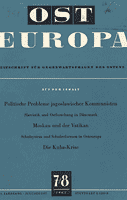

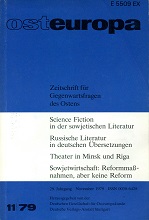
Russian Theatre;
More...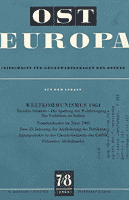
Keywords: Ukrainian Literature;
More...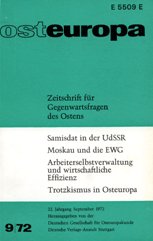
Literatur und Kunst gehörten in den letzten einundeinhalb Jahren zu den am meisten diskutierten Themen in der sowjetischen Öffentlichkeit. Im Rechenschaftsbericht des ZK der KPdSU vor dem XXIV. Parteitag in Moskau gab Generalsekretär Leonid Breshnew eine Analyse des literarischen und künstlerischen Schaffens und unterstrich dabei die Notwendigkeit der Hebung des Niveaus der Literatur- und Kunstkritik. Er charakterisierte die sowjetischen Künstler als Schöpfer von "künstleriscben Werten" und sagte, daß jeder von ihnen dazu berufen sei, "ein aktiver Beteiligter an der Umgestaltung der Gesellschaft auf kommunistischen Prinzipien" zu sein. Daß nicht alle Künstler immer diesen Prinzipien treu folgten, wurde von Breshnew selbst bestätigt, als er sagte: "Ohne Zweifel, die Erfolge der sowjetischen Literatur und Kunst wären noch bedeutender, und die Mängel wären schneller beseitigt worden, wenn unsere Literatur- und Kunstkritik aktiver die Parteilinie durchgeführt hätte". (Kommunist, 5/1971, S.70).
More...Keywords: Czechoslovak Cinema;
More...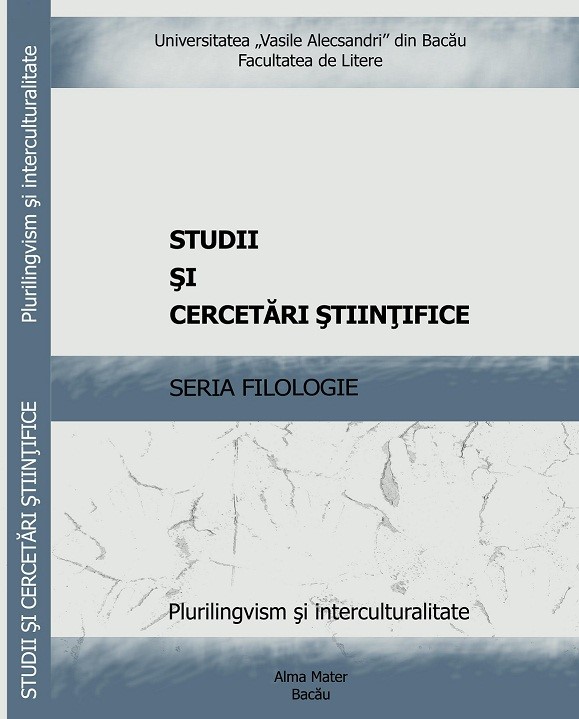
Florinela Floria - UN SEMN SOCIOCULTURAL: CASA CA IMAGINE A LUMII - Violeta Popa, Casa: Imago mundi, Bacău, Editura „Alma Mater”, 2014; Florinela Floria - SPAŢIUL ROMÂNESC DE LOCUIT ŞI LIMBAJUL SĂU - Violeta Popa, Românii şi imaginarul locuirii, Bacău, Editura „Alma Mater”, 2014; Camelia Chelariu - SÄDEGH HEDĂYAT: ÎNGROPAT DE VIU - Sădegh Hedăyat, Îngropat de viu , Iasi, Editura "Polirom", 2014; Otilia Cocuț - GERALD DURELL: FAMILIA MEA ȘI ALTE ANIMALE - Gerald Durell, Familia mea și alte animale, București, Editura YoungArt, 2014; Petronela Savin - IOAN DĂNILĂ: ROMȂNA CORECTĂ PRIN ÎNTREBĂRI, RĂSPUNSURI ŞI COMENTARII - Ioan Dănilă, Româna corectă prin întrebări, răspunsuri şi comentarii, Craiova, Fundaţia-Editura "Scrisul Românesc", 2014; Vasile Spiridon - DESPRE MODUL ŞI DURATA DRAGOSTEI - Lia Faur, Avatarurile feminităţii în opera lui Camil Petrescu, „Vasile Goldiş” University Press, 2014;
More...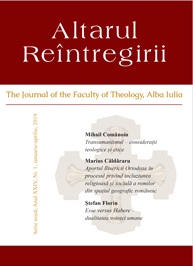
Keywords: theological education; cultural beliefs; secular pressures;
This study aims to highlight the internal elements of religious education. The Sacred and the sacred play a very important role in the religious educational system. The image of the sacred is revealed in a clearer way in the New Testament in Christ: Who is greater than the temple. Another chapter is dedicated to cultural beliefs such as those imagined by Grace Davie for Great Britain: believing without belonging. The historical sequence has the role of identifying possible Christian educational models in the first fathers of the Church. The last chapter is dedicated to the theological tasks that are imposed in the context of secular pressures.
More...Keywords: Gheorghiu-Dej regime; Gheorghiu-Dej in Soviet documents; Gheorghiu-Dej in Soviet memoirs; contemporary Russian historiography; Gheorghiu-Dej at the UN;
In this article we aim to present, based on sources from the former Soviet archives and contemporary Russian historiography, the way in which the Romanian communist leader Gheorghe Gheorghiu-Dej is reflected.Knowing these documentary contributions offers us the possibility of a better understanding, and a more accurate interpretation, of a series of moments that Romania went through during the period when he was in charge of the country.
More...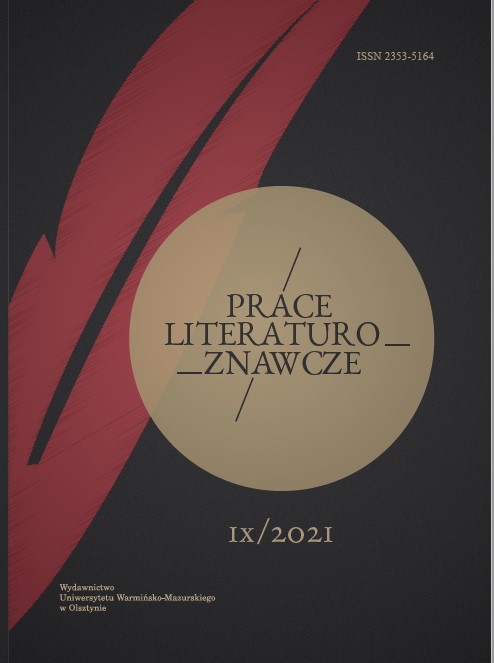
Keywords: historical novels; antislavism; First Republic of Austria; „völkisch” literature; lit-erature of the interwar period in Austria; Karl Hans Strobl
After the collapse of the Habsburg Monarchy, many Austrian nationalistic writers were rein-forcing anti-Slavic resentment by means of highlighting the superiority of German culture and her-itage over Slavic culture across the territory of the newly formed states. On the example of several historical novels, above all the novel “Die Fackel des Hus” (1929) by the Sudeten writer Karl Hans Strobel, who was one of the leading writers of the Viennese nationalist and pro-fascist faction in the First Austrian Republic, it is shown how national-patriotic and catholic writers fostered the myth of the elitism of German spiritual culture in Austria.
More...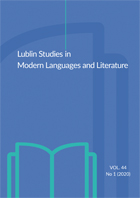
Keywords: youth literature; emotions; young reader; translation; ethic; aesthetic; linguistic; Astrid Lindgren; The Brothers Lionheart;
Children’s literature reflects society and conveys new models. This field evolves depending on the representations of childhood that adults build. Recent research shows that children experience deep emotions and that reading contributes to their social and affective development. This paper examines the different issues related to writing the affects aimed at young readers through the study of Astrid Lindgren’s novel Les frères Coeur-de-Lion. It focuses on ethical, aesthetic and linguistic questions involved in translating the book from Swedish to French.
More...
Keywords: Roman architecture; Pannonia; Aquincum; domus; peristyle house; legionary fortress
The House of the Tribunus Laticlavius, a large building in the legionary fortress of Aquincum, has only been partially excavated, and this was in the 1970s. This short paper makes an attempt to understand its function and find its place in Roman architecture through a reconstruction of its floor plan and comparison with other prominent residential buildings of the period which share similar features. It appears very likely that the house is based on a loose adaptation of a Hellenistic model, tailored to the needs of high-ranking officers of the Roman army.
More...Keywords: identity; media culture; television; social identity; media identity; discursive identity; interview; dialogical forms; talk show;
The polysemantic nature of the identity concept predetermines the fact that the entity in question cannot be limited to a specific scientific field. Thus, it has to be considered from various research perspectives as philosophy, psychology, sociology, anthropology, communication, social psychology, etc. A multitude of factors influence the current context related to shaping cultural identity and, first of all, the complexity of the post-modernistic world, in which there has been an obvious fragmentation of the public environment. Thus, the research of Discourse identities (a concept coined by the French linguist Patrick Charaudeau and widely used in the international scientific framework) and of the identity representations from the media culture must indispensably be associated with the phenomenology of intercultural communication. Media culture is a technological, industrial, sociological, cultural and trade phenomenon, therefore its productions must be permanently related to the sociocultural context in which they were or are created. And since the present analytical approach is focused on the identity aspect of the audiovisual arts or, in a broader context, of media culture, it is natural that the “talking subjects”, as creators of symbolic goods, be in the forefront of this scientific discourse alongside with their past and present day productions.
More...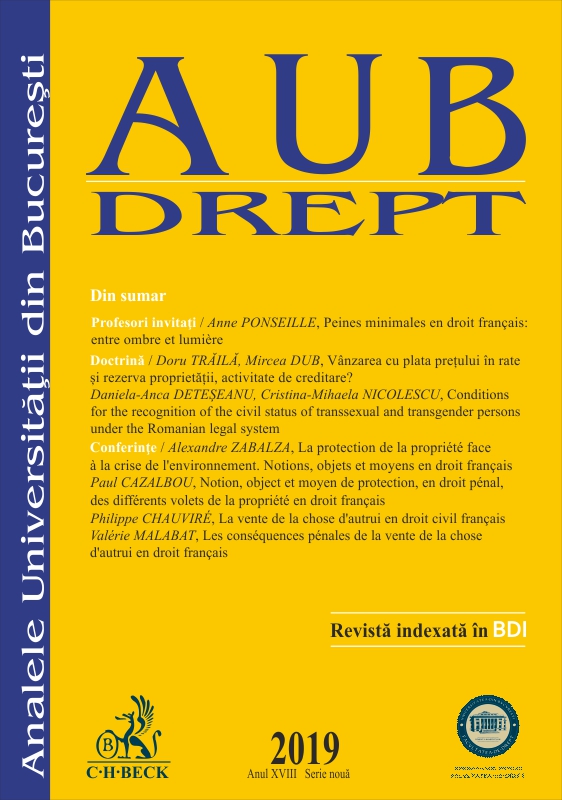
Keywords: civil property; environment; ecological justice; model; property right; philosophy of law;
The model of civil property, which regulates man’s relations with things, is today deeply criticized, accused of being the institutional tool that legitimizes the progressive destruction of our environment. The idea of property protection raises a question of fundamental environmental justice: how to protect an institution that no longer protects or protects?
More...Keywords: philosophical system; cultural theory; axiological focusing; mioritic space; religious values;
A thinker and metaphysician of the mysteries of the world and the depths of the human soul, in his philosophical system Lucian Blaga focused on the way in which the basic elements of a culture operate within the various human communities or isolated individuals (ethnic communities, peoples, nations, personalities etc.). In order to achieve this critical analysis he resorted to the structural arrangement of the known data in a stylistic matrix of maximum generality, in which the categories of spirituality can be quantified and valued, highlighting thereby a modern vision of the cultural-historical phenomenon in time and space. Even more interesting is the application the Romanian thinker makes, by viewing the various basic issues of the Romanian culture, through the prism of categorical elements of the stylistic matrix. This is then deepened in the analysis the philosopher dedicated to the artistic phenomenon, but also to the religious one, where we detect the increased attention due to the sensitiveness of the topic, hence resulting probably Blaga’s extra objectivity regarding the structuring of religious values.
More...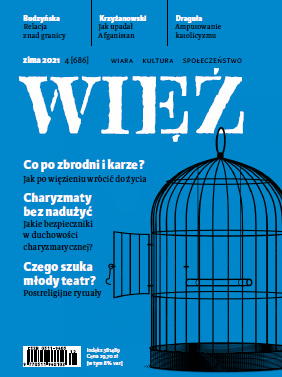
Keywords: Maurice Maeterlinck; The Intruder; Drama play;
„Wydaje mi się, że nie jest tu zbyt jasno” – tymi słowami Maurice Maeterlinck rozpoczyna swój jednoaktowy dramat Intruz. Ciemność i mrok, światło i jasność – dokładne widzenie racjonalnej rzeczywistości wobec niepokojącej ślepoty, w której, paradoksalnie, można dostrzec znacznie więcej. Sztuka belgijskiego noblisty jest opleciona siecią takich przeciwieństw i sprzeczności, a sam proces lektury przypomina drobiazgowe odkrywanie sensu i docieranie do prawdy, przed którą chciałoby się uciec – okazuje się bowiem ostateczna, dramatyczna i nieodwracalna.
More...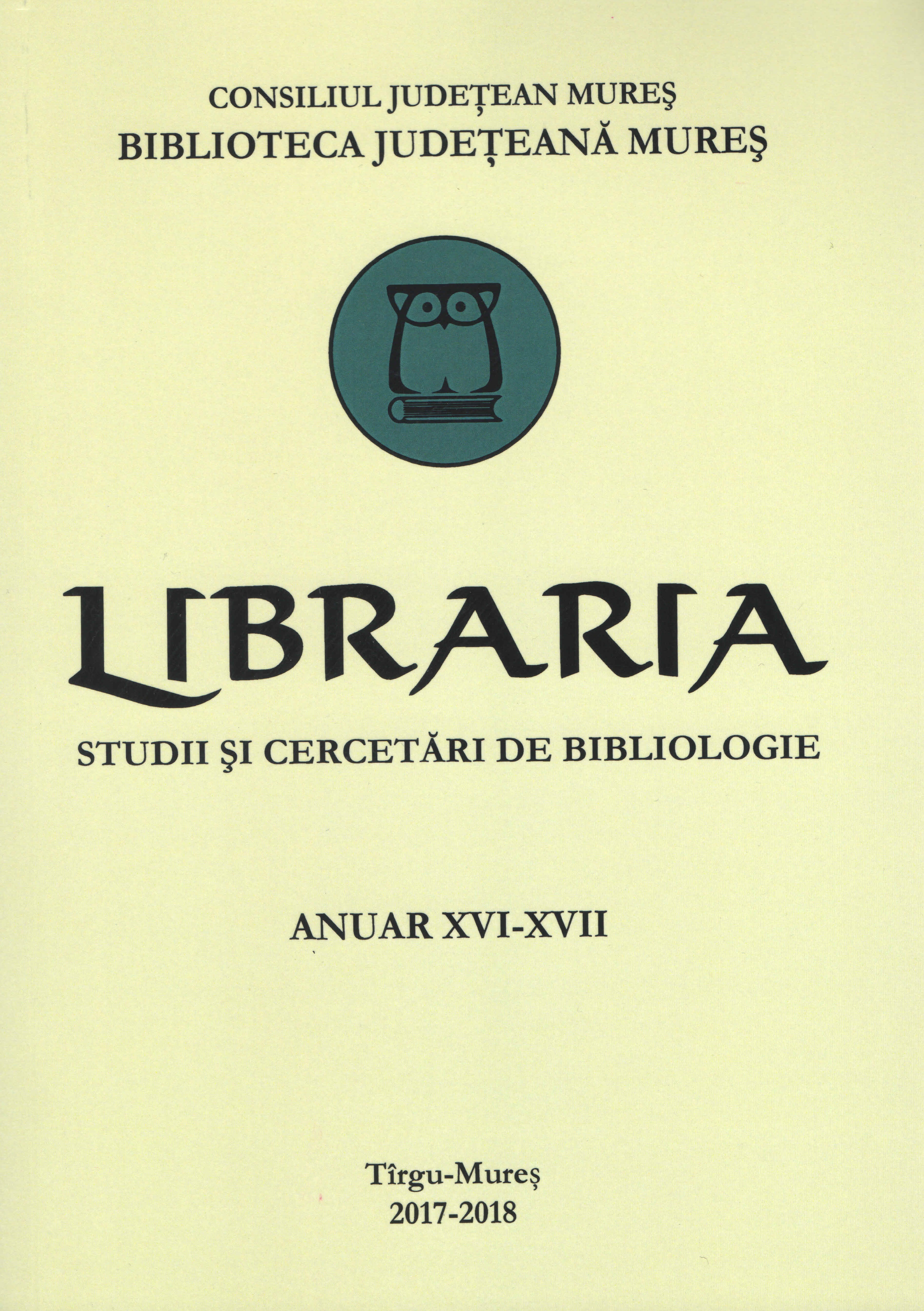
Keywords: children; book illustration; stories; imagination; characters;
The interest of children and teenagers for reading seems to be diminishing these last years. It has become a real challenge for the libraries to make an attractive offer to their youngest readers, this implies offering books they are interested in, besides the ones that are compulsory reading at school. So, the focus should be on the books which they find attractive at a certain period in time. A very important aspect, when we talk about books for children, is the one regarding the illustrations of a book, because a child is very much influenced and drove to find a book interesting when it comes in an attractive presentation.
More...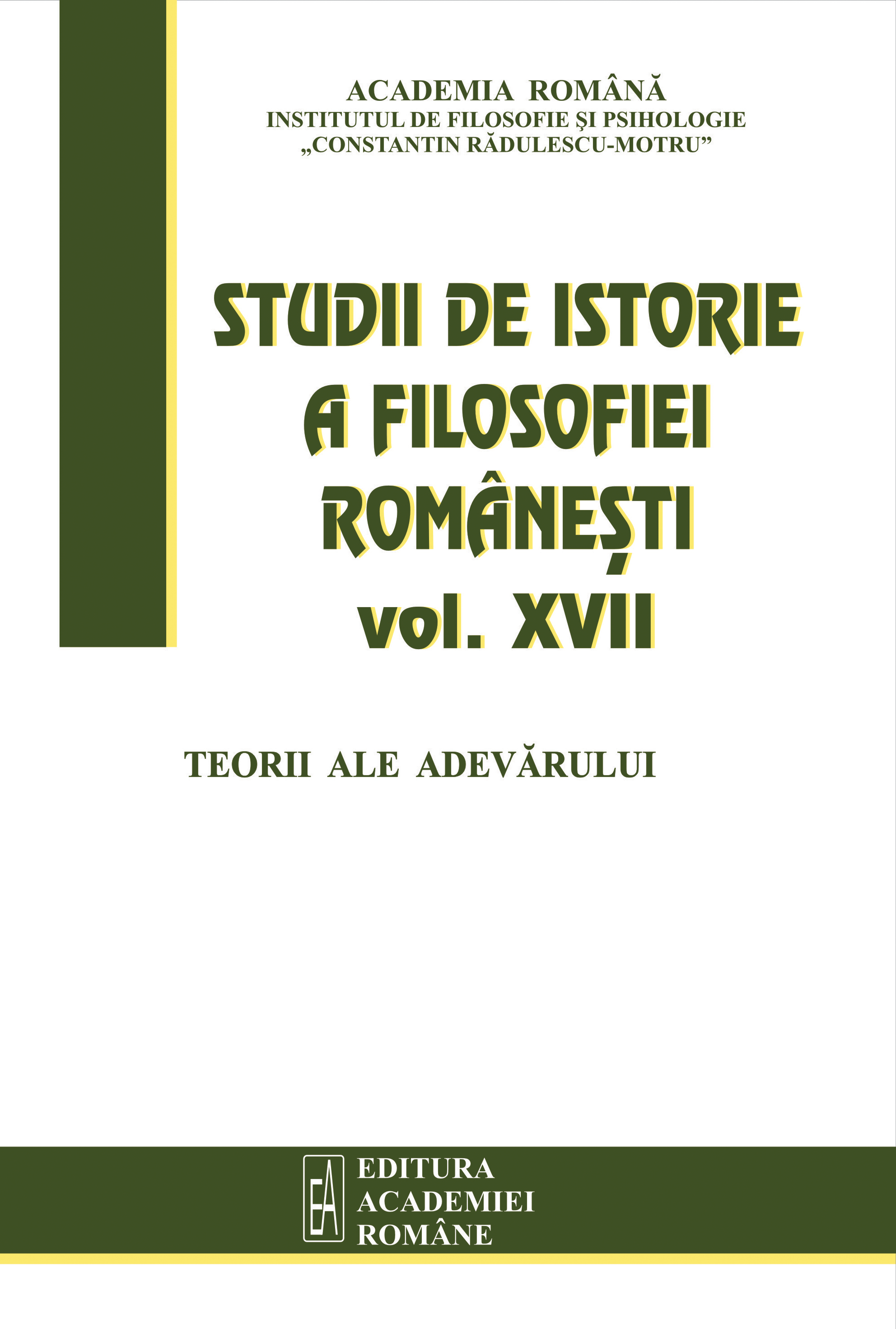
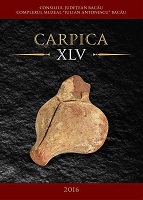
Keywords: stained glass; ethnography;
Review of: Silvia Ciubotaru, Ion H. Ciubotaru, Vitralii. Pagini etnoculturale din presa anilor 1992-2012, IAŞI, EDITURA „PRESA BUNĂ”, 2015, 514 P.
More...